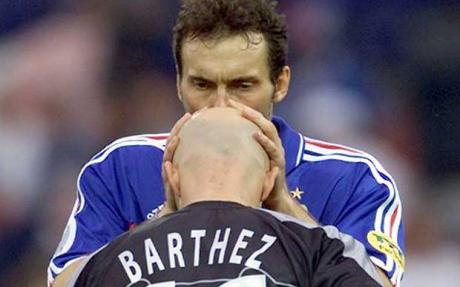The Ball
Ancient British pagan customs used balls to determine the future through divination. This practice was often enacted by children who made balls from cowslips to determine their future husbands and wives. As they tossed the ball back and forth, they chanted the names of their love interest and every time the ball fell, the last name chanted as the ball dropped became the most likely candidate.
Other rituals evolved during warfare, when men relied on the ball’s alleged prophetic powers to determine their fate. Pig bladders were often used in the game of football, however, on one infamous occasion in Chester; the head of a dead Viking was kicked around in celebration of a recent victory over the invaders.
Today, superstitions still occupy a pre-eminent position in the modern game and soccer players perpetuate these rituals. From walking on the pitch backwards, urinating, burying a clove of garlic and sprinkling salt on the pitch, to wearing clothing inside out, spitting or chewing, all these actions are designed to bring about a victory. Watch any warm-up to a football match and you will clearly see players touch the ball or bounce it an even number of times before starting the game as part of their lucky rituals.
Chanting
Chanting before, during and after the game is another ritual that has been part of the football scene since the 19th century. Chants are usually shouted or sung in the present tense in a “Call and Response” manner, in response to what is happening at that moment. Chanting and singing not only unifies the fans but also has various other functions such as encouraging their team or to insult and intimidate the opposition.
Drink
Food and alcohol consumption is another part of the rituals that are associated with football. Drinking takes place before, during and after each game with most alcoholic consumption occurring in pubs and bars. However, because of drunken and often violent behaviour, the sale of alcohol was banned in stadiums across the UK.
Banners
The waving of banners is another ritual in the game of football. A banner or standard can be a written placard or a long strip of material such as a scarf or a flag. Standards have their foundation in warfare and were used as symbols to stir up loyalty. It was used to show a rallying point in times of battle, to identify whichever groups were fighting or the location of a particular group within the battlefield. This practice of standard bearing dates back thousands of years and all fighting armies carried their standards into battle.
Banners showing support for the team can take many forms, including nationalistic flags, scarves with the team colours as well as written banners, supporting the team or insulting the opposition. The colours of the football team are items of great pride and lifelong honour as were the colours revered by every army battalion. Many people also support their team by wearing the number shirt of their favourite player. Professional footballers believe that double numbers on a football shirt brings good luck but it is bad luck for a transferring player to take his old number to a new team.




